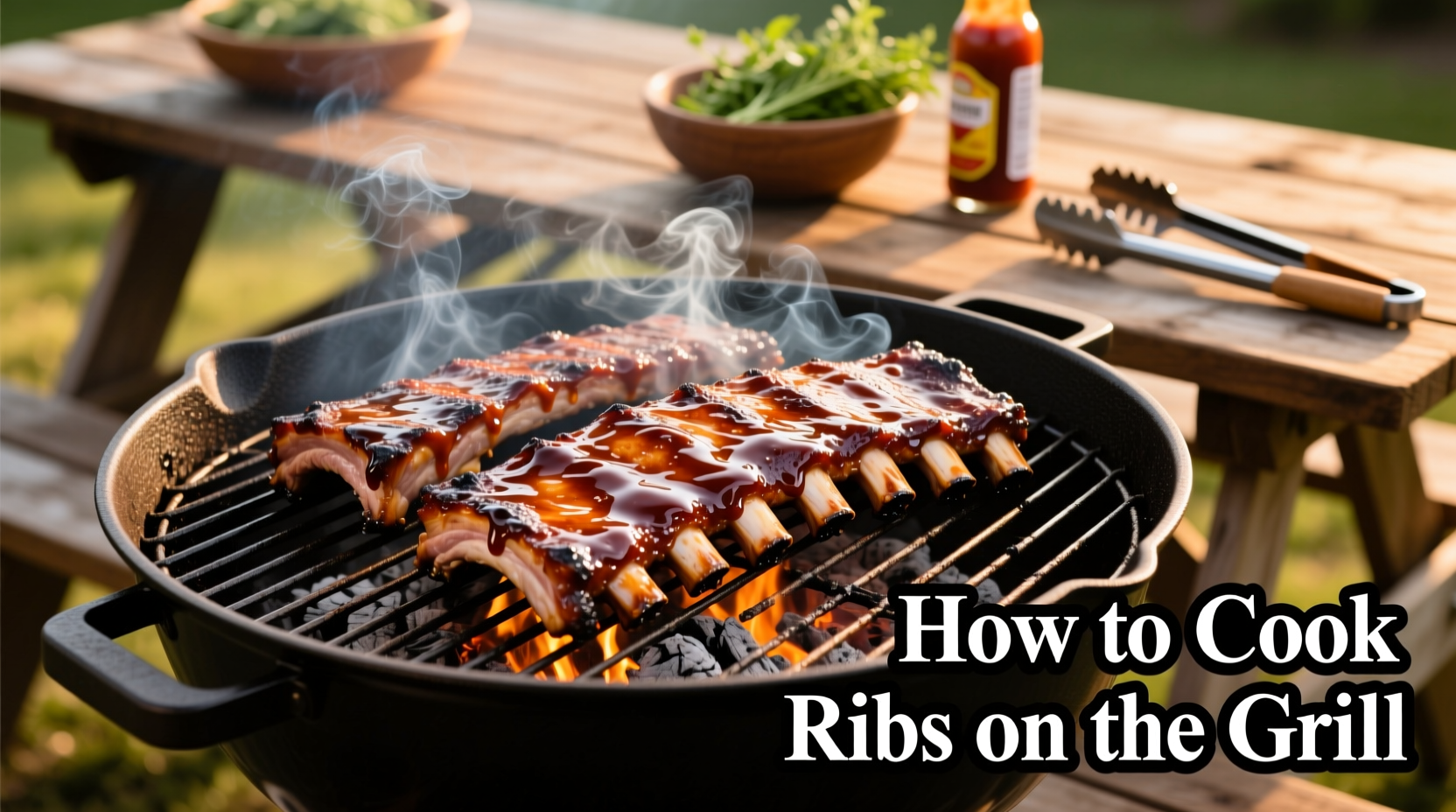Perfectly grilled ribs require 3-4 hours at 225-250°F using the 3-2-1 method: 3 hours unwrapped, 2 hours wrapped in foil with liquid, and 1 hour unwrapped with sauce. Use a meat thermometer to ensure internal temperature reaches 195-203°F for fall-off-the-bone tenderness without drying out.
There's nothing quite like the smoky aroma of ribs cooking on the grill. Whether you're preparing for a weekend barbecue or perfecting your technique for competition season, mastering grilled ribs separates casual grillers from true pitmasters. This comprehensive guide delivers the exact method professionals use to achieve tender, flavorful ribs every time—no guesswork required.
The Science Behind Perfectly Grilled Ribs
Ribs contain significant connective tissue that requires slow, low-temperature cooking to transform into gelatin. The USDA Food Safety and Inspection Service confirms that pork becomes safe to eat at 145°F, but ribs need much higher temperatures—195-203°F—to achieve that signature pull.
| Temperature Range | Texture Result | Recommended Time |
|---|---|---|
| 160-170°F | Chewy, undercooked | Insufficient |
| 180-190°F | Firm but tender | 2.5-3 hours |
| 195-203°F | Fall-off-the-bone perfection | 3-4 hours |
| 205°F+ | Dry, stringy texture | Overcooked |
Your Pre-Grill Preparation Path
Success begins long before you light the grill. Follow this preparation sequence for optimal results:
Selecting Quality Ribs
Choose USDA Choice or Prime grade ribs with even marbling. According to the National Pork Board, St. Louis-cut spare ribs offer consistent thickness, while baby back ribs cook faster but contain less meat. Look for ribs with a pinkish-red color and firm texture—avoid any with grayish hues or excessive liquid in the packaging.
Membrane Removal Technique
The silver skin membrane on the bone side prevents smoke penetration and causes uneven cooking. To remove it:
- Slide a butter knife under the membrane at one end
- Lift gently until you can grip with a paper towel
- Pull membrane off in one piece
Dry Rub Application
Apply 1/4 cup dry rub per pound of ribs, massaging into all surfaces. Let sit uncovered in the refrigerator for at least 1 hour (or overnight for deeper flavor penetration). A proper rub should contain salt for moisture retention, sugar for caramelization, and spices for complexity—but avoid excessive sugar which burns at grill temperatures.

The Grill Setup Path
Temperature control separates good ribs from great ribs. Follow these setup guidelines:
Indirect Heat Configuration
Arrange charcoal on one side of the grill or turn on only one burner for gas grills. This creates a safety zone where you can move ribs if flare-ups occur. Maintain 225-250°F throughout cooking—fluctuations greater than 25°F cause uneven results.
Essential Equipment Checklist
- Dual-probe meat thermometer (one for grill, one for meat)
- Drip pan filled with water (maintains humidity)
- Aluminum foil (heavy duty for wrapping)
- Spray bottle with apple juice/water mix (1:1 ratio)
The Cooking Process Path
Follow this precise timeline for competition-worthy ribs:
Phase 1: Unwrapped Smoking (3 Hours)
Place ribs meat-side up on the indirect heat side. Spritz every 30 minutes with apple juice mixture. Maintain consistent temperature—add charcoal as needed. The meat will develop a beautiful smoke ring and dark bark during this phase.
Phase 2: Foil Wrap Rest (2 Hours)
Double-wrap ribs in heavy-duty foil with 1/4 cup liquid (apple juice, beer, or broth). This "Texas crutch" method steams the ribs, breaking down collagen without drying. The internal temperature should climb from 160°F to 190°F during this phase.
Phase 3: Sauce Finish (1 Hour)
Remove foil, return ribs to grill, and apply thin layer of sauce every 15 minutes. The internal temperature should reach 195-203°F. Ribs are done when the meat retracts from the bones by 1/4-1/2 inch and bends easily when lifted with tongs.
Finishing & Serving Path
Rest ribs for 15-20 minutes before cutting—this allows juices to redistribute. Slice between bones with a sharp knife using a gentle sawing motion. Serve immediately with additional sauce on the side.
Troubleshooting Common Issues
Problem: Ribs finished too quickly
Solution: Your grill temperature was likely too high. Next time, reduce to 225°F and use a reliable thermometer.
Problem: Burnt exterior but undercooked inside
Solution: You applied sugar-heavy rub too early. Apply sugary components only during the final hour.
Problem: Meat stuck to the bone
Solution: Temperature didn't reach 195°F. Use a probe thermometer to verify doneness rather than relying on time alone.
Pro Tips for Next-Level Results
For restaurant-quality results, try these advanced techniques:
- Inject ribs with apple juice and spices before applying rub
- Add wood chunks (hickory for strong smoke, apple for mild) during the first hour
- Place ribs bone-side down during the final hour for more even caramelization











 浙公网安备
33010002000092号
浙公网安备
33010002000092号 浙B2-20120091-4
浙B2-20120091-4